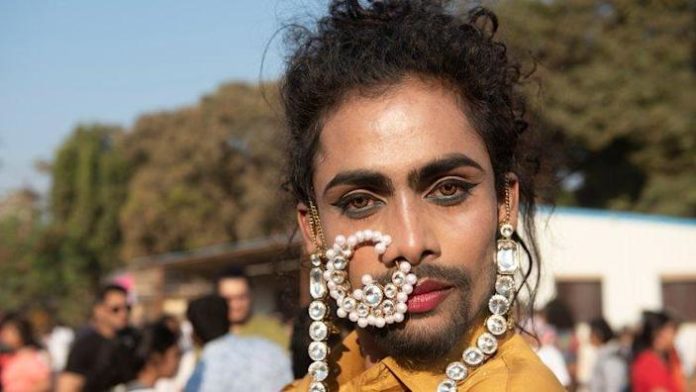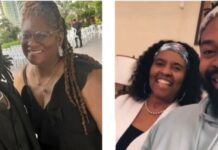
What was it like growing up gay in India? When I sat down to write this piece, mining my 47-year-old mind for hours, I was overwhelmed with the number of experiences and memories that floated to the surface. We forget so much with the passage of time, that now seemed to come to light.
My college years spent growing up in ’90s Mumbai were not gay-friendly at all. In fact, no one even used the word “gay.” The only time you read about a “homosexual”’ man was in some sordid story in the newspapers where some guy had been held up at knifepoint when he had asked a sexual favor of another man. Or more commonly, gay men were laughed at as the butt of a nasty joke. They were considered as an object of ridicule, “pansies,” and it didn’t help that the culture around us — English theatre and Bollywood — portrayed them as camp, shrieky, the source of a punchline. There were no role models whatsoever and the only person one saw or heard speaking up in favor of gay men at the time was Madonna — a white woman from halfway across the world in America on MTV! It was like people didn’t know how to actually characterize Indian gay men, simply because there wasn’t enough visibility of them. So, they reached for the stereotypes.
Even though I was part of a nice group of friends, my first few years of college I felt acutely alone. Everyone around me seemed to be dating someone of the opposite sex, or talking about dating someone of the opposite sex. I would simply nod to their chatter, whilst we sat on the college stairs and watched everyone go past, my mind filled with a haze of confusion and self-doubt. How was one supposed to reach out to other gay men, to befriend them? Technology was still a giant step behind, with Whatsapp, social media, and the mighty internet yet to make their presence felt. No LGBTQ student committees like there are today, so what was one supposed to do? I was always left with this constant clogged feeling inside that never went away.
When someone mentioned that there was this dingy, underground nightclub called Voodoo that was gay on Saturday nights, it was like a lightbulb moment. I somehow managed to muster up enough courage to visit it one Saturday night, after much trepidation since there was such a taboo nature espoused to the place, and it was my first taste of openly gay nightlife. Contrary to what I thought (or feared), everyone was friendly, laughter filled the air, the dancefloor was packed with gay abandon and there was just an infectious sense of bonhomie. It was like everyone had found their happy place. Once the club shut, most people trickled off in packs to the promenade that lined the Gateway of India (monikered “the Walls”) that was a popular cruising spot on Saturday nights.
But I never got a better sense of what it was to be a gay man from those nights at Voodoo, however fun they were. For that I turned to literature in the ensuing years, and took comfort in the words of Edmund White and Larry Kramer and Alan Hollinghurst. It gave me a better understanding of myself, my desires, an empowerment of who I was…and yet by the end of the book, I once again felt hollow. With their settings of Paris and London and New York, where being gay was so openly accepted, in India it was still criminalized. You see, according to Section 377 of the Indian Penal Code, same-sex relationships were considered an “unnatural offence.” The storylines that these books portrayed seemed so far removed from what the situation was actually like in India, where LGBTQ folks were still not even free by law to love another. We were still being enslaved by an archaic 1861 law that the British empire had left behind.
When on September 6, 2018, in a historic verdict, the Supreme Court decriminalized Section 377 and allowed same-sex relationships between consenting adults, it was like a giant roar was heard around India. For many it was a second Independence Day. People were putting up videos weeping with tears of joy, congratulatory message flooded social media, some youngsters even came out to their parents on camera that day. There was a string of parties scheduled that entire week and the celebrations continued for days on end. In fact, one of the first few people I spoke to that day was my literary agent based in the U.S. The novel I had been working on was complete, a gay romcom between an Indian closeted man and an American visiting for work, but things now had to change. “We need to include this New India in it,” I excitedly told her referring to the verdict, and the last part of the novel was subsequently reworked. Like a foreboding background score, the lead up to the Section 377 verdict runs through the entire length of the book.
This year marks the third anniversary of that momentous day. Things have certainly changed since then. For one, there’s far more positive representation of LGBTQ people in the media. Several corporations have started including policies that are LGBTQ-friendly. The spotlight of inclusivity that the world is focusing on is being taken more seriously, especially when it comes to transgender people. Even Bollywood has gotten woke in making more realistic gay content, dropping the caricatures of yore. And thankfully, you no longer need to cruise at “the Walls” to find someone like you, with the proliferation of apps like Grindr and Scruff on smartphones. While there are several other issues that still need to be tackled, like same-sex marriage, steps are being taken in that direction to make it a reality one day. Fingers crossed.
Farhad J. Dadyburjor, born and based in Mumbai, has been an entertainment and lifestyle journalist for more than 20 years. He has written for many publications and held several senior editorial positions, including at DNA, as launch editor at the international men’s magazine FHM, and is currently at The Leela magazine. He also has a popular blog of his own, My Good Life, in which he covers food, travel, culture and fashion.
The Other Man, which Lake Union Publishing releases October 12, 2021, is his American fiction debut and most likely the first gay rom-com that is set in modern-day Mumbai. Find out more at Dadyburjor’s website, and follow him on Instagram @farhadjd and Twitter @FarhadJD.








